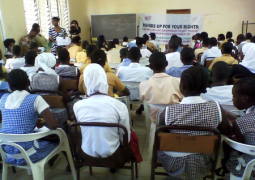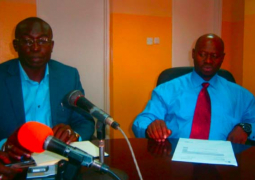Mix of GIS, technical and financing advice helps countries shift from high-carbon imports to low-carbon domestic energy.
By embracing an integrated mix of renewable energy, energy efficiency, and grid technologies, countries can put their energy systems on a more sustainable path while developing economically, according to a new report from the World watch Institute. The report, Sustainable Energy Roadmaps: Guiding the Global Shift to Domestic Renewables, lays out an innovative, targeted approach those details how countries can take specific technical, policy, governance, and financial steps to help make the shift to sustainable energy a reality.
“Still today, an estimated 1.3 billion people worldwide lack access to electricity, and another 1 billion have unreliable access,” said Alexander Ochs, Director of World watch’s Climate and Energy Program and the lead author of the report. “But expanding fossil fuels is not the solution to the world’s energy challenges. We need solutions that are economically, socially and environmentally sustainable----many of which are now at hand. Implementing our Sustainable Energy Roadmaps will enable decision makers to pursue strategies that are in the true interest of their people while protecting Earth’s climate.”
To develop a Sustainable Energy Roadmap, World watch analyzes an area’s potential for energy efficiency gains and undertakes detailed GIS mapping of local renewable energy resources, including wind, solar, and biomass. The Institute also produces an infrastructure inventory that assesses solutions for grid renovation and energy storage. In addition to technical analysis, the Roadmaps explore the socioeconomic impacts of diverse energy pathways, including the potential for sustainable energy development to create jobs and reduce healthcare and electricity costs. World watch’s Roadmaps can be applied almost anywhere----in industrialized and developing countries----and at multiple levels of political organization, from the municipal to the regional.
“When governments, energy specialists, and the public join in a guided conversation to consider their country’s energy status and potential, they can see more easily the options for freeing themselves from dependence on imported fossil fuels,” said World watch President Robert Engelman. “The Roadmaps show a route to sustained long-term economic development, universal energy access, cleaner local environments, healthier populations, and carbon-free energy systems. It’s impressive that some developing countries are now poised to make this shift more rapidly than many countries that are much wealthier.”
The burning of coal, oil, and other fossil fuels is a leading driver of global climate change and many other environmental and socioeconomic problems worldwide. Air pollution from fossil fuel combustion contributes to smog, water pollution, and acid rain and can trigger or exacerbate health conditions, including chronic respiratory and heart disease, lung cancer, and asthma. Many countries rely heavily on fossil fuel imports, making them dependent on foreign energy supplies and vulnerable to price fluctuations on the global market. Competition among energy-insecure countries over dwindling fossil fuel resources also contributes to civil or international conflicts, creating an unnecessary obstacle to development and prosperity in many regions.
Due in large part to massive subsidies to fossil fuels, the world’s energy resources are not utilized as effectively or efficiently as they could be. Coal, oil, and natural gas still account for more than 80 percent of the world’s primary energy consumption, despite the adverse impacts of these fuels on the well-being of both present and future generations. And although energy production from all major renewable energy sources----wind, solar, biomass, hydro, and geothermal----is booming, it remains far from its full potential. Developing local renewable energy resources, alongside job training and education programs, can provide quality long-term employment and help countries build strong economies with sustained growth.
In Sustainable Energy Roadmaps, Worldwatch emphasizes four key components that can help countries and regions transition successfully to sustainable energy use:
• Capture synergies from energy efficiency and renewable energy. Expanding both energy efficiency and renewable energy capacity simultaneously results in increased energy benefits. Reducing energy demand through efficiency measures means that renewable energy can displace fossil fuels more rapidly. At the same time, many sources of renewable energy, such as solar photovoltaic (PV), have much higher efficiency rates than conventional energy sources. And, since renewable energy is often produced at or close to the location where it is consumed, less energy is lost in distribution through the grid.
• Integrate multiple renewable energy sites and sources. One challenge to a rapid transition to a renewable energy economy is the “variability” of renewable resources such as wind and solar: power generation depends on factors like the time of day, cloud cover, and wind patterns. Such variability can be reduced greatly by harnessing renewable resources from both different areas as well as different energy sources. In the Dominican Republic, for example, wind resources in the north are strongest in the early evening and peak in the winter months, whereas wind resources in the south are strongest in the morning and peak in the summer. Integrating wind power from both areas into the electricity system can provide a relatively consistent level of wind power throughout the day and year. Similarly, wind and solar power can be integrated with the burning of combustible renewable fuels such as biomass and biogas, which can provide reliable generation on short notice during periods of particularly high energy demand, or at times of low generation from other renewable sources.
• Promote strong and feasible policy solutions. Identifying both energy efficiency measures and strong renewable resource potentials are important steps to making smart energy planning decisions, but effective policies are vital to ensure that the benefits of sustainable energy are fully realized. A long-term vision for sustainable energy, concrete policy tools and incentives, and a streamlined and transparent governance structure are all important to creating a stable and profitable investment environment for scaled-up investments in energy efficiency and renewable energy. Analyzing the regulatory environment in a country or region is an important first step to understanding what policy tools are most effective and politically acceptable. A toolbox full of proven effective and affordable mechanisms exists, and best practices from around the world provide important guidance for action. But ultimately, policymakers must decide which concrete tools to apply.
• Identify lifecycle costs and financing opportunities. Around the world, renewable energy is already cost-competitive with fossil fuels----if the long-term economic and societal costs are taken into account. But fossil fuels benefit from decades of subsidies and the support of powerful interests. It is therefore essential that energy developers seeking to pursue energy efficiency and renewable energy projects gain access to appropriate financing tools. Because the renewable energy industry is still relatively new, there is a general lack of knowledge on the part of investors and banks about how to effectively fund such projects. Capacity building within the financial sector is necessary to develop long-term loans for renewable energy development and to minimize the perceived riskiness of sustainable energy investment. Options within domestic public funds, multilateral lending agencies, and bilateral financing must be explored, and networks between the key finance actors must be actively promoted.
Agricultural Spectrum catchword of the Week: “Let preserve our forest and parks.”
For comments, suggestions, and contribution please email saineymarenah@ymail.com or contact +220-3471343.
Read Other Articles In Article (Archive)
Kombo Sillah Association UK Aims High
May 18, 2009, 9:39 AM



